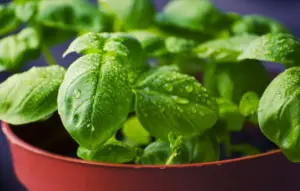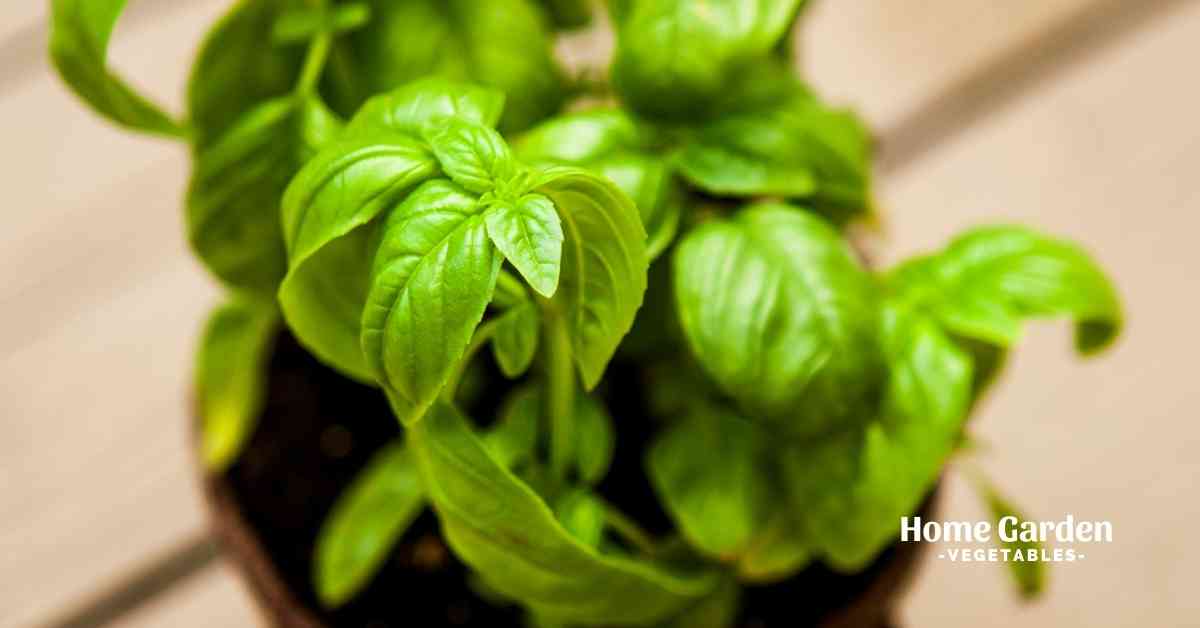There’s nothing like the smell of fresh basil to transport you back to summer in the garden on the coldest, darkest days of winter. To enjoy the pleasures of cultivating basil all year, simply follow the four simple procedures shown below.

Basil is a versatile herb that may be used in a variety of cuisines. Having fresh basil on hand may improve tomato meals, stews, and soups for the home chef.
Reader Poll: What online courses would interest you?
Basil is an excellent plant for beginners who want to try their hand at indoor gardening. Basil may be grown effectively inside on a tiny sunny window sill with little room. Growing basil indoors extends the growing season and eliminates the need to go to the store when a recipe asks for it.
Growing Basil Indoors
You will have an infinite supply of basil for your gourmet masterpieces if you cultivate basil indoors. Friends and family will appreciate the basil you harvest for their meals, and they’ll be pleased by your year-round green thumb.
Common Types of Basil You Can Grown Indoors
There are lots of different varieties of basil, each with its own distinct flavor and characteristics. The following are some of the most popular indoor-growing varieties:
Subscribe to our newsletter!
- Genovese (Ocimum basilicum): This variety, sometimes known as Italian basil, has enormous green leaves and a sweet, classic basil flavor.
- Purple (Ocimum basilicum): This cultivar is known for its deep purple color and pointed leaves with a rich, almost licorice-like flavor.
- Lemon basil (Ocimum basilicum x citriodorum): This hybrid plant has thinner, more delicate leaves and is often used in Asian cuisine due to its unique citrus flavor.
How to Grow Basil Indoors?
Basil is simple to grow. It may be started from cuttings or seeds. Instead of starting from seeds, acquire one healthy basil plant from a local supermarket or garden center and multiply it over the growing season. Growing basil from cuttings in soil or water is a quick and easy way to develop fresh plants.
Growing Basil Indoors From Cuttings
Cut 4-5 inch long basil cuttings from an established plant. Ensure that the incision is made below the leaf node. Remove all of the leaves from the cuttings except for a few sets at the top. Remove any flowers that may be present on the stem.
Submerge only the bottom 2/3 of the stems in water while placing the cuttings in a container. Keep the container warm by placing it on a windowsill that receives early sunlight. Replace the water on a daily basis. In 2-4 weeks, your cuttings will be ready to plant.
Growing Basil Indoors From Seeds
Basil is a simple plant to cultivate from seed. Starting the seeds after early spring, around 5-6 weeks before the typical last frost date, is a good idea. Basil seeds may be planted indoors at any time if you reside in a frost-free area.
Sprinkle the basil seeds on top of the seed mix in the seed tray or mini pots, carefully working them into the soil. Since the seeds are very little, plant them no more than 1/4 inch deep and cover them quickly with earth. Follow the same care instructions as you would for any seedlings.
Growing Basil Indoors
Basil is a very satisfying plant to cultivate since it is pest and disease-free and has a great smell and flavor. Because the herb reacts well to trimming and topping, you may start using the leaves as soon as the plant has established itself and branched out.
Choosing the Right Container
Basil thrives in a variety of containers. Make sure there are enough drainage holes. Basil may be started indoors in tiny 6-8 inch deep pots. Repot the plant into a one-size-larger container once it has grown larger and outgrown its current container.
Before placing the plant pot on top of the saucer, make sure to cover it with a layer of stones. Root rot will occur if the pot’s bottom touches the collected water in the saucer.
Providing Sunlight
Basil plants, whether grown inside or outdoors, require a lot of light—at least 6 hours of full sun every day. Keep your basil plants under fluorescent lights for 12 hours a day, with the lights about 2 to 4 inches away from the tops of the plants. To avoid burning the bulbs, keep the leaves away from the bulbs.
Humidity
Basil plants thrive in humid environments, so mist your plant from time to time, especially if your home is unusually dry. If you need a little more moisture, set your basil container on a bed of wet river rocks to raise the humidity level surrounding the plant.
Temperature
Keep your basil somewhere warm, such a room with a temperature of 70 degrees Fahrenheit or more. Avoid placing the plant in areas where it will be exposed to a strong or chilly breeze, such as in front of an open window in the winter or near an air conditioner.
Water Requirement
Keep your basil plants moist on a regular basis for optimal results. Basil grows best when given around 1 inch of water each week, although plants in pots generally require a little more. Once the top layer of soil has dried up, or when the plant begins to show signs of wilting, water it.
Pruning
Pluck the leaves of basil from the top-down, harvesting is practically trimming the plant. Smaller plants can have individual leaves removed, while bigger plants can have stems snipped a few inches down.
Fertilizer
There’s a strong possibility your basil plants won’t require any more nutrients if you’ve already modified your soil with organic compost earlier. If you discover your basil plants aren’t growing as much as you’d like, you may feed them once a month with light liquid fertilizer.
Conclusion
Basil is a flavorful herb that is usually used in many dishes in several ways. Now, you don’t need to wait for a particular season to use freshly grown basil. By using the above-mentioned ways, you can grow basil indoors around the year.

